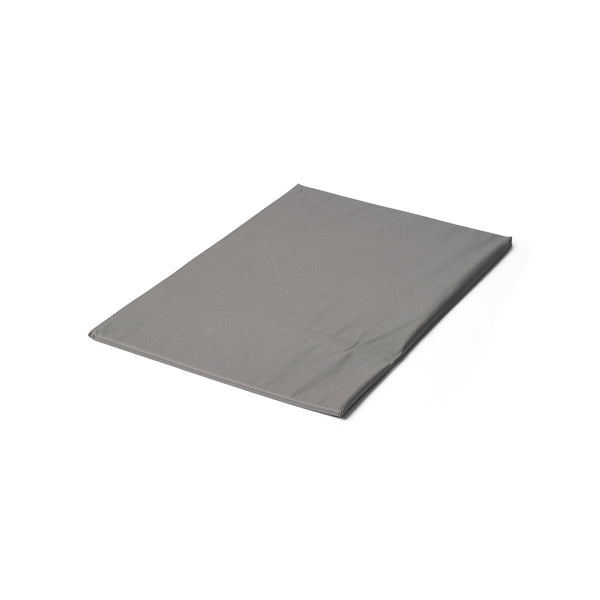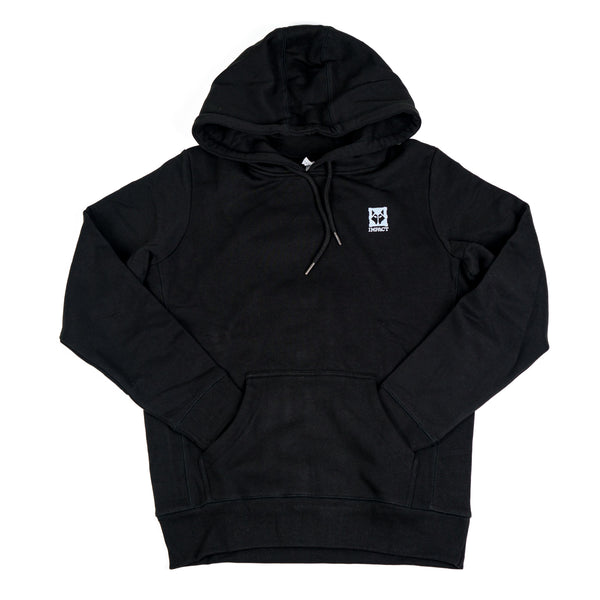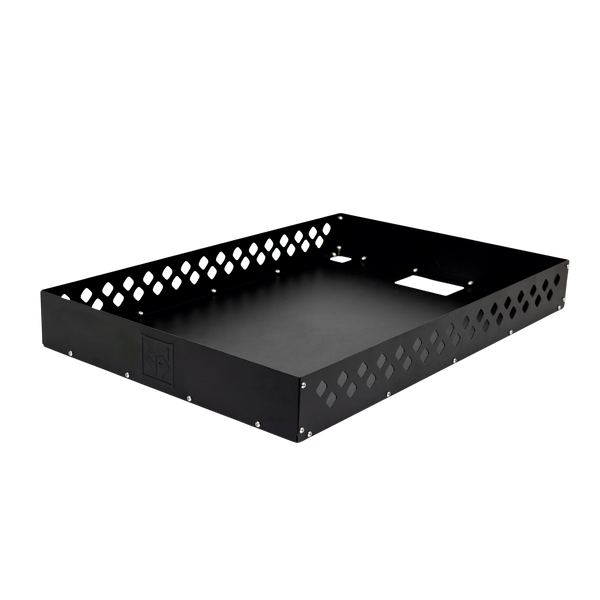Many dogs love riding in cars and eagerly hop in whenever they get the chance. But this certainly isn’t universal, and some dogs hate car trips. In fact, car rides are frightening for some four-footers. This can be quite a drag for owners who’d like to take Rover on the open road. But there are a few things you can do to instill a positive frame of mind about car rides or – if your pooch is already averse to autos – help him feel better about riding in your vehicle.And fortunately, most of them are pretty easy. So, read on and get ready to enjoy riding around with your canine co-pilot on a regular basis.

1. Start Desensitizing Your Dog to the Car Early (and Slowly)
As with so many other aspects of dog care, it’s easier to address potential issues before they occur than it is to correct them after they’ve manifested. This is especially true for the subject at hand – it’s a million times easier to foster a good attitude about car rides than it is to alter existing biases. This means you’ll want to start introducing your dog to the car from a young age as part of your puppy socialization plan. But don’t just load him up and hit the road; go slowly, reassure him repeatedly, and dole out some tasty treats to help establish a positive association with the car. For example, you may want to begin by just allowing your dog to sniff the outside of your car. Toss him a treat or two and assess his reaction.If he seems to be fearful, that may be enough auto exposure for the day. Stop and try again tomorrow!If your pup is taking things in stride, you may want to open the car door and place him inside (without turning on the car). Let him explore a bit, while continuing to provide treats and praise. Take note of his comfort level again; if he’s apprehensive, go ahead and quit for the day. But if he’s digging it, take things a step further – perhaps by simply turning the car on.This slow, incremental build of exposure to a new, novel experience is something trainers call desensitization. It’s the best way to introduce your dog to something new without freaking him out too much! Keep baby-stepping your way along, moving up to brief trips around the block and then moving up to long rides. Eventually, your pooch will be jumping up with excitement anytime you grab your keys.2. Use Dog Car Ramps
One of the easiest ways to help your dog feel confident about car rides is by making it easy for him to climb into and out of your vehicle. Many automobiles – especially SUVs and trucks – are really high off the ground, which can be very intimidating (not to mention hazardous) for some doggos. So, consider picking up a dog ramp to use when traveling with your floof. Most dogs will find that a ramp makes entering and exiting the vehicle much easier and less frightening. Learning to use a ramp can build confidence in anxious pups. Plus, it will keep your dog safer and eliminate some wear and tear on his joints.3. Try Playing Some Soothing Music
Believe it or not, dogs do appear to enjoy music.At least, they like some kinds of music. Your pupper probably won’t like your death metal playlist, and he probably won’t care very much about Taylor Swift’s latest tune. As it turns out, dogs often find aggressive rock agitating, while pop music doesn’t really move the meter for them. But many dogs do appear to like classical music. Some even find it soothing! This has led some shelters and rescues to play classical music in an effort to keep their resident canines calm. Use this to your advantage when riding around with your pup. Dial in some Mozart and let the canine concerto begin! It certainly isn’t guaranteed to work – music doesn’t seem to mean much to some mutts. But it’s one of those high-upside, low-downside tricks that you may as well try.4. Consider Drugs for Long Trips
Not everyone likes resorting to drugging their dog, but sometimes it’s the best option to keep your dog calm in a stressful situation. A couple of times a year I do a huge cross-country road trip from New England to Texas with my dog Remy. Unfortunately, Remy hates the car, so it’s always quite the ordeal for us. When I first began doing this drive, Remy would regularly tremble and shake with fear. Even when he wasn't visibly shaking, his dog body language revealed how nervous he was, as he would constantly pant and yawn whenever we were in the car.I knew I needed to desensitize him to the car in slow, gentle increments. But spending 6-8 hours in the car for several days in a row during our cross-country road trips wasn’t something I could avoid. After discussing the issue with my vet, we decided to try giving him Gabapentin during car rides to help keep him calm. Even a small dose of Gabapentin made a huge difference, and for the first time Remy was able to relax and even nap during our long car rides. Drugs are not a perfect solution, and I am still working on desensitizing Remy slowly to car rides, giving plenty of treats and praise to make car rides a positive experience. But, on those occasions where we need to go on a long trip that will be over Remy’s current capacity threshold, an anti-anxiety drug like Gabapentin can go a long way to helping Remy continue to feel calm and safe in the car.5. Consider Crating Up
Dogs are just as at risk in car accidents as humans are. This means that if your dog isn’t safely secured, they’re just as likely to fly out the windshield as you would be without a seatbelt.One of the best ways to keep your pup safe in the car is through the use of a heavy-duty, secure travel crate like the Impact Collapsible Dog Crate. Since it’s collapsible, it’s easy to use during car travel and then fold away when it’s not in use.If you’ve properly desensitized your dog to the crate and he’s already built good experiences lounging and sleeping in the crate at home, using the crate in the car can even provide a bit of extra comfort to a nervous pup!6. Take Your Dog Fun Places (Don’t Just Get in the Car to Go to the Vet)
Aside from doing things to make your pet comfortable while riding in the vehicle, it’s also important that you vary your destinations. If your dog’s only car rides involve trips to the vet or other less-than-amazing places, your dog will probably develop a negative association with the car. So, be sure that you take your four-footer on some trips to the dog park, beach, or any other place your pup enjoys. For that matter, try to balance trips to not-so-fun places by visiting super-awesome places immediately afterward. In other words, if you have to take Scraps to the vet for a shot, hit a pet store afterward and let him pick out something tasty. You may even want to work in the occasional “trip to nowhere” – just hop in, drive around a bit, and come right back home. By keeping your terrier on his toes in this way, it’ll prevent him from thinking every car ride will involve something unpleasant.7. Withhold Food Before Car Rides
Barfing is rarely fun for your dog, and it’ll be even less so if it happens while riding in the car (you probably won’t find it to be especially fun to deal with the aftermath, either). So, you’ll want to do everything you can to prevent car sickness while riding with your pooch.There are a few different car-sickness-prevention tricks you can employ, including riding with the windows down and utilizing dog booster seats. But perhaps the most helpful strategy is to simply withhold food for a few hours before jumping in the car. Now, because you don’t want your four-footer to feel famished, you may have to plan ahead a bit. For example, if you need to visit the groomer at 9:00 AM, you may need to get up a little earlier than normal and offer Spot a small breakfast, leaving plenty of time for him to digest before the car ride. Similarly, you shouldn’t allow your dog to drink a ton of water right before jumping in the car. You don’t have to completely withhold water but keep an eye on your pet’s water intake. Let him wet his whistle, but don’t let him gulp down a gallon.8. Drive Like Your Grandma
Now that you’ve slowly introduced your dog to the car (and let him climb in via a ramp), secured him in the backseat, selected a Beethoven playlist, and withheld food, it’s time to do one more thing to ensure he enjoys it: Drive like you’re carrying the precious cargo you are. Not only will this help keep your dog safe and prevent him from being flung hither and yon, but it’ll also help him feel more relaxed when riding. Avoid flying around corners or punching the gas pedal as though you’re a stock car driver. Don’t break-check the jerk behind you driving 6 inches off your bumper. And definitely wait to practice your mad drifting skills until after you’ve dropped your dog off safely at home – go too fast and your floof will just end up furious. Instead, you’ll want to slow down a little more than usual when going around corners. You’ll also want to take speed bumps very gently, and accelerate and decelerate in nice, easy fashion. Don’t forget, your dog won’t be able to anticipate your driving maneuvers and preemptively shift his weight like a fellow human would.
We hope you find these tips both helpful and easy to implement. But you know your dog best and some of these tactics may be more or less helpful than others for your specific situation. So, don’t hesitate to pick and choose from the ones left above or tweak them in ways that you think would help get the job done. And remember, not every dog will love riding in a car. But almost every floof in the world will have to go for a car ride on occasion. And because you don’t want your little wiggler to be afraid when that happens, it’s wise to start implementing these car-riding canine tips sooner than later.















